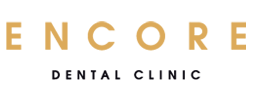You can prevent gum disease by practicing good oral habits, such as flossing and brushing every day. You can also prevent gum disease by eating a diet that promotes bone, gum, and teeth health. Maintaining a healthy smile requires a commitment to caring for your smile and your overall health. The first step is to understand the structure and function of your teeth to better take care of them. The gingival ( gums) are the soft tissue that surrounds your teeth and bone. The gums protect the bone and the roots of the teeth. Unhealthy gums put your teeth and your overall health at risk.
Structure and Function of Teeth
The tooth has two anatomical parts.
The crown of the tooth is the part that is covered in enamel and is visible in the mouth. There is also the root, embedded in the jaw, which anchors the tooth to its bony socket. The outer part of the crown is the enamel and is the hardest substance in the body. Inside is the dentine which forms the bulk of the tooth and is protected by the enamel. Deeper inside the tooth you will find the pulp. The pulp extends from the crown to the tip of the tooth containing the blood and nerve supply to the tooth. There is also a bone-like tissue that covers the roots known as the cementum.
Structures around the tooth: The periodontal ligament is made up of thousands of fibers that anchor the tooth to the jaw bone. The oral mucosa is the moist tissue that lines the mouth. The Gingivae (gums) Is the soft tissue that provides a liubiracted surface and directly surrounds the teeth and bone. The bone provides a socket to surround and support the roots of the teeth.
Gum Disease and Causes
Gum disease, otherwise known as periodontal disease is an inflammation of the gums that can progress to affect the bone that surrounds and supports your teeth. Periodontal disease is caused by the bacteria that the sticky, colourless film known as plaque contains. Smoking, hormonal changes in women, diabetes, other illnesses or medications, and genetics can add to the risk of developing gum disease.
Gum Disease Outcomes
- Tooth loss
- Gum disease leads to tooth loss when the bacteria progresses down to the tooth root, eventually deteriorating the bone and tissue that support the teeth.
- A correlation between Periodontal disease and other diseases:
- Scientists have found links between gum disease and a number of other diseases including: heart disease, diabetes, dementia, rheumatoid arthritis, and premature birth.
Prevent Dum Disease
- Limit Tobacco use:
- Smoking is the leading cause of gum disease in adults. Limit your tobacco use.
- Alcohol consumption:
- Dehydration and too much sugar are the main risk factors. Excessive drinking is not good for your gums or body.
- Proper brushing:
- The right toothbrush should fit comfortably in your hand (brushing your teeth is not exactly fun and it sure doesn’t need to be uncomfortable) and should be able to reach your back teeth comfortably. Pick a toothpaste with fluoride to give your enamel a strength boost. Brush on a 45-degree angle and work around your mouth using a circular or backwards and forwards vibrating motion. Do not scrub your teeth as that may lead to both gum and tooth tissue damage.Focus on cleaning right to the gum line.
- Flossing:
- In order to clean below the gum line, and rid your mouth of harmful bacteria, it is important to take the time to floss. Make sure to clean every tooth on both sides.
- Laser Dentistry:
- An effective way to reverse the harmful effects of gum disease is to see your dentist for laser treatment. Dentists can use laser treatment to eliminate the bacteria hiding below the gum line and significantly reduce the effects of gum disease.
Important Mineral and Vitamins For Oral Health
Certain minerals and vitamins play a vital role in helping your tissues and bones fight off infections and remove bacteria. Specific vitamins can decrease your chances of having tooth decay and gum disease.
The list of essential minerals and vitamins that provide benefits to your oral health care includes:
- Calcium—Eating calcium regularly helps your teeth enamel and jaw stay strong and healthy.
- Sources of Calcium: Milk, yogurt, cheese, beans, and kale
- Iron—Bacteria build up in the mouth can be due to a lack of oxygen. The primary role of iron is to transport oxygen throughout your body.
- Sources of Iron: Liver and red meat
- Vitamin A—A healthy flow of saliva is essential in removing bacteria from your teeth, and Vitamin A helps maintain a healthy saliva flow.
- Sources of Vitamin A: beef liver, sweet potatoes, melon and spinach
- Vitamin B3—Vitamin B3 converts food into energy and elevates your nervous system function. By consuming too little Vitamin B3, your oral health is affected by creating bad breath and mouth sores.
- Sources of Vitamin B3: Chicken and fish
- Zinc—Zinc helps to inhibit the growth of bacteria and the build-up of plaque along your gum line.
- Sources of Zinc: Wheat, cereal, wild rice, cheese, and beef
- Vitamin C—Vitamin C plays an essential role in maintaining healthy teeth and preventing gingivitis. A lack of Vitamin C can cause your gums to bleed and lose teeth.
- Sources of Vitamin C: Sweet potatoes, raw red peppers, and oranges
- Vitamin D—Vitamin D helps your body to absorb calcium and should be taken alongside foods that are high in calcium. A lack of Vitamin D can lead to burning mouth syndrome, which includes a bitter, metallic taste and dryness in your mouth.
- Sources of Vitamin D: Milk with egg yolk or fish to increase Vitamin D intake
- Magnesium—Magnesium helps to build durable enamel for your teeth and helps prevent the formation of cavities.
- Sources of Magnesium: Spinach, kale, dark chocolate
Schedule A Comprehensive Dental Examination
We proudly service patients from Port Coquitlam, Coquitlam, and other surrounding areas!
Encore Dental Address:
2663 Shaughnessy St.
Port Coquitlam, BC, V3C3G7
Call Us: 604-464-4131
View Larger Map
According to our Google reviews, approachability, personalized care, great customer service, implementing the latest technology and materials in dentistry set us apart.



